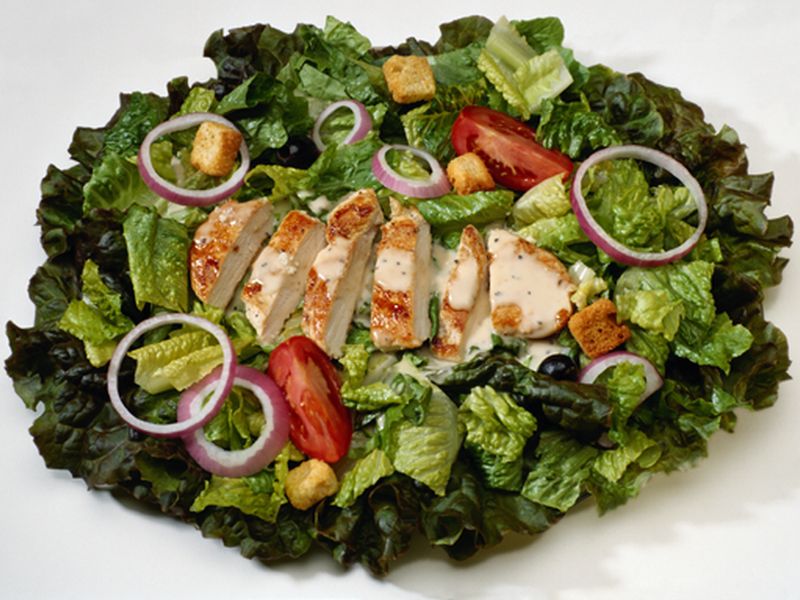Fast Prep Steps for Healthier Salads
By Len CanterHealthDay Reporter

TUESDAY, Sept. 10, 2019 (HealthDay News) -- Make the most of your farmers market bounty with fast salads that highlight end-of-summer's best produce, like a filling Cobb salad with tomatoes, corn, and green and red lettuces.
Some simple prep tips make it an easy lunch or dinner, and smart swaps help streamline the traditional version's calorie count.
Start by prepping your greens the right way. Carefully wash the lettuce leaves, shake them dry by hand or with a salad spinner, and then wrap them in paper towels to crisp for about 15 minutes in the fridge. When you're ready to use them, roll them up like a cigar and use a serrated knife to slice them into ribbons. This makes lettuce a lot easier to eat.
Adding fresh corn to a salad is a snap. If the corn is really fresh and the kernels are tender, there's no need to cook it. If you're unsure, bring a large pot of water to boil, drop in the shucked cobs, cover and turn off the heat. In about seven minutes, they'll be ready. Once cool, use a serrated knife to slice off the kernels.
Traditional Cobb salad contains bacon and cheese -- and that can add up to too much fat. Make a leaner swap for the bacon by using prosciutto, which is cured so no cooking is required. In place of the usual blue cheese, use goat cheese, which has up to 30% fewer calories than most cheeses, usually 70 per ounce.
Plain poached chicken breast is the primary protein source in a Cobb salad, and perfectly healthy as long as you discard the skin. Hard-boiled eggs are also among the ingredients. They deliver protein along with important vitamins like B12, so they can stay in. But if you're limiting cholesterol and/or fat, replace half the whole eggs with just the whites.
In addition to diced tomatoes, add radishes for a crunchy twist, plus any other vegetables that are available locally.
With all the ingredients at the ready, simply arrange them in rows on a large platter and serve with your favorite mustard vinaigrette.
More information
The Louisiana State University has a great guide to lettuce varieties, including tips to grow your own.

The news stories provided in Health News and our Health-E News Newsletter are a service of the nationally syndicated HealthDay® news and information company. Stories refer to national trends and breaking health news, and are not necessarily indicative of or always supported by our facility and providers. This information is provided for informational and educational purposes only, and is not intended to be a substitute for medical advice, diagnosis, or treatment.

